
|   |

|   |
 e-mail: ukb7@rediffmail.com Sensibilities of a Modern Man Photos courtesy: Sapphire Creations March 14, 2018 What is Indian dance and what could be its new directions? Is there anything ever new, when it comes to the human body in terms of its form and what it should seek to portray in terms of content? These and other provocative questions were pointedly raised in Samabhavana, an impressive, two-day national level meet in Kolkata on March 3 and 4, 2018: to debate about directions, possibilities and developments in Indian dance. This was spearheaded by Sapphire Creations who has striven, since 1992, to create first an idiom and a language, and then a whole vocabulary of contemporary dance in eastern India over the last quarter of a century. Playing the role of an agent provocateur, this critic, when invited, premised his broad thesis on the modern man's perceptions of what he is and what he is not. He is certainly not the one-dimensional man portrayed by Herbert Marcuse. Nor is he the Fallen Man - - tumbling headlong into a bottomless abyss - as painted by Krishen Khanna nor is he the bewildered entity looking with bemused eyes into the fast-receding past, from the back of a speeding truck surging ahead. Au contraire - - aware that he is born in the present century - he has his sensibilities in the right place and, among other things, is reasonably aware of his heritage as well as potency of the visual and performing arts that are civilization's gifts to him. Very broadly, what should he expect from the Indian dance scene? First and foremost, aware that he is the inheritor of a rich, multi-layered mythology carried in his epics and the Puranas, the modern man would expect this to be interpreted with sensitivity to the modern psyche. Ekalavya myth, for instance, is not just the heroic struggle of a lonely youth in the middle of an overwhelming forest to achieve proficiency, as was recently visualised in an otherwise excellent choreography by Rhythmosaic in their Ekalavya. It is also about ostracisation of the marginalized by the dominant Brahminical class due to the youth's lowly origin. Again, the Draupadi myth is not only about a wronged woman who is saved by divine grace through an endless supply of attire. It is far more - as rightly mirrored by Geeta Chandran in her Draupadi - about the devastated femininity which rises, in vengeance, to vow for blood against the perpetrators of the ignominy. After all, Hell hath no fury like a woman scorned... 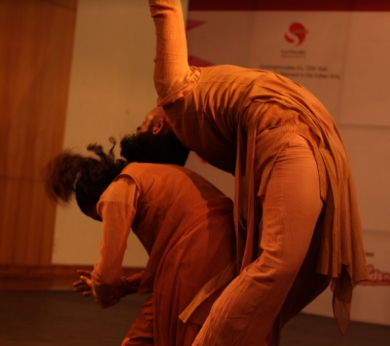 Dancers of Aditi Mangaldas Dance Company 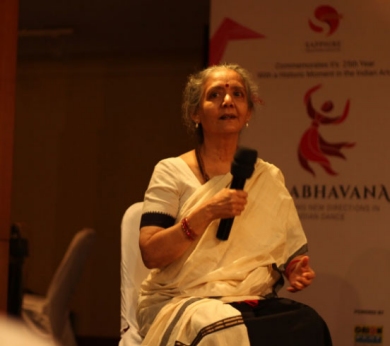 Daksha Sheth Secondly, the modern man would imagine, now that over three generations since Independence, Indian classical dancers have consolidated their techniques, they would foray into contemporary sensibilities - in either treatment or theme, if not in both the domains - as a matter of course, rather than as exception. Chandralekha had admirably shown the way in her lifelong oeuvre from Prana to Sharira, and Kumudini Lakhia has done so in Coat, Atah Kim? and others, but the countless classical dance practitioners do not yet venture beyond the terra cognita: from Alarippu to Tillana; from Mangalacharan to Moksha; and their ilk. Yes, Aditi Mangaldases, Vaibhav Arekars and Daksha Sheths are there, but still they are exceptions who do not rule the roost. Thirdly, in contemporary dance scene - without going into the contentious ground of what strictly marks out the "contemporary" beginning with Uday Shankar - the modern man is yet unsure if there is anything clearly to be demarcated as "Indian contemporary" with an unambiguous grammar and canon, as the West has seen Contemporary Dance, and then Modern Dance, clearly branch out, one after the other, from classical ballet with their clear-cut rules of the game - in the USA, the UK and France, if not elsewhere. Indeed, the modern man would love to see - - speaking quite arbitrarily - - Mandeep Raikhy and Santosh Nair from Delhi to hold hands of Sudarshan Chakravorty and Ronnie Shambik Ghose from Kolkata, inviting also their illustrious counterparts from Bengaluru and Mumbai to join force, and inducing Astad Deboo to provide the needed leadership, in order to evolve one or more well-defined tenets of India's "contemporary consensus". Fourthly, the modern man would absolutely adore seeing some of the safety havens of "Atma-meets-Paramatma" mindset yield to more mundane interpretations nearer our time. After all, both theatre and painting had a similarly secure divinity syndrome in their classical phase and both genres had stepped clearly into secularity. Attending any of the Indian Triennales of paintings would prove this point as would a survey of the pan-Indian theatre scenario: from B. Jayshree in Karnataka to Waman Kendre, Satish Alekar and the erstwhile Satyadev Dubey in Maharashtra; Neelam Mansigh in Punjab; M.K. Raina in J & K; Mohan Maharishi, Bhanu Bharati, Anuradha Kapoor, Tripurari Sharma, et al in Delhi; Sanjay Upadhyay in Bihar; Manoj Mitra, Rudraprasad Sengupta, Bratya Basu, Kaushik Sen, et al in West Bengal; Ratan Thiyam and the erstwhile Kanhaiya Lal in Manipur, just to cite a few names at random. In fact, just stepping outside this subcontinent into the vast Asian peninsula and Asia-Pacific countries - where the Ramayana is equally taken to heart as in this land, but without Rama being anywhere near the divine - would help to reveal how an epic can splendidly serve modern man's psychic needs without necessarily invoking the heaven's interventions. 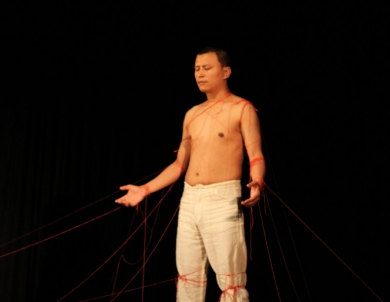 Surjit Nongmeikapam 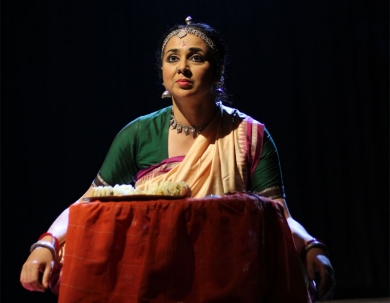 Sharmila Biswas 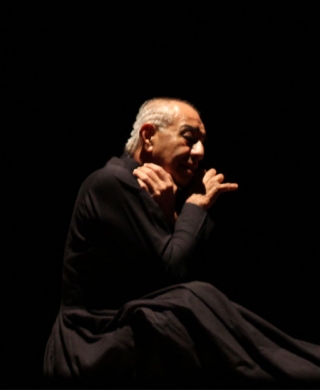 Astad Deboo 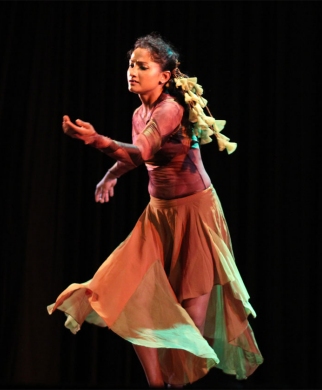 Hemabharathy Palani Finally, the modern man would see modern technology made fully use of, to enhance the cause of dance. This critic recalls having suggested the same over a decade ago in his book, Luminous Harmony: Indian Art and Culture, in the form of "Artware" that attracted the attention and approval of Dr. Kapila Vatsyayn while writing the book's Foreword. Broadly speaking, the proposal is to harness digital technology to create Artware for the following: - -Skilling the dance learners, with standard sets of introductory and advanced lesson packages that she can follow at leisure, created under supervision by competent authorities like Chennai Kalakshetra for Bharatanatyam, national Kathak Kendra for Kathak, Jawaharlal Nehru Manipuri Dance academy for Manipuri, and so on. - -Skilling the dance performers, by letting them view quality programmes performed by acknowledged masters, after releasing the excellent packages already available in DD Archives and elsewhere. - -Skilling the dance choreographers, by exposing them to innovation and experimentation by ace choreographers like Surjit Nongmeikapam performing 'To', Sharmila Biswas performing 'Evoking Radha', Hemabharathy Palani performing 'Yashti', Geeta Chandran performing 'Unurth', and Astad Deboo performing 'Liminal, below the edge' showcased in the present meet Samabhavana by way of illustrations. - -Skilling the dance viewers, through audience-awareness exercise, as created for Odissi by Ramli Ibrahim's talk with demonstrations by Jyoti Srivastava at National Cultural Audio-visual Archives (NCAA) - - again by way of a single illustration. As a postscript, this critic pointed out the enormous progress made in digital technology in the last one decade since Artware was first suggested. One, the enormous storage that would be needed for such a resource is today available outside one's own server in the external space through "cloud computing." Two, expert advice, brain-like reasoning and machine-learning are available at one's doorsteps through "artificial intelligence." Three, communication networks have made enormous strides by enabling disparate things to be converged and conveyed together through "internet of things." In conclusion, this critic brought out that national level digital archives have since been pressed into service. NCAA, mentioned above, is one such initiative created by twenty-one national cultural organisations like Sangeet Natak Akademi, Sahitya Akademi, Indian Council for Cultural Relations, Centre for Cultural Resource and Training, Indira Gandhi National Centre for the Arts, and sixteen others. Using the supercomputer at the IGNCA and globally valid cataloguing and indexing facilities - with the aid of 21-element Extended Dublin-Core Metadata Sets which are international standards - - NCAA is today recognized as the world's "first tested digital archive." Nothing prevents the other incipient archives in dance and related arts to join the national initiative of NCAA and broad-base their valuable services.  Dr. Utpal K Banerjee is a scholar-commentator on performing arts over last four decades. He has authored 23 books on Indian art and culture, and 10 on Tagore studies. He served IGNCA as National Project Director, was a Tagore Research Scholar and is recipient of Padma Shri. Post your comments Please provide your name and email id when you use the Anonymous profile in the blog to post a comment. All appropriate comments posted with name & email id in the blog will also be featured in the site. |